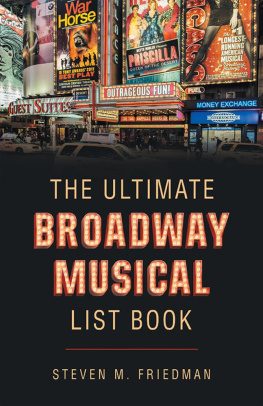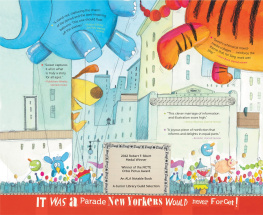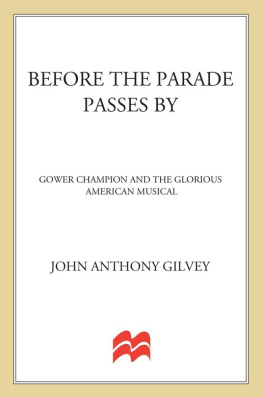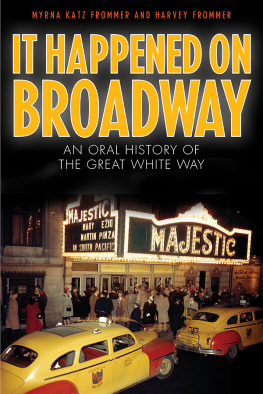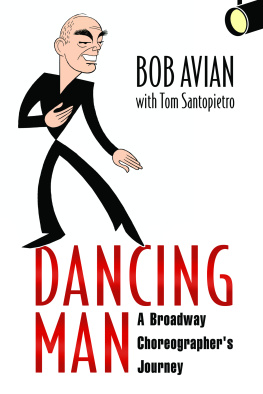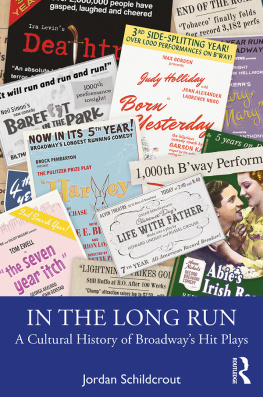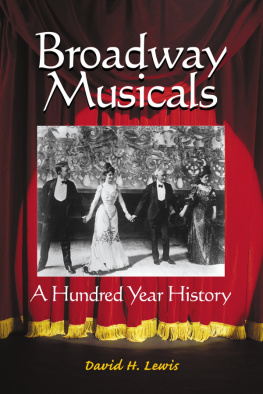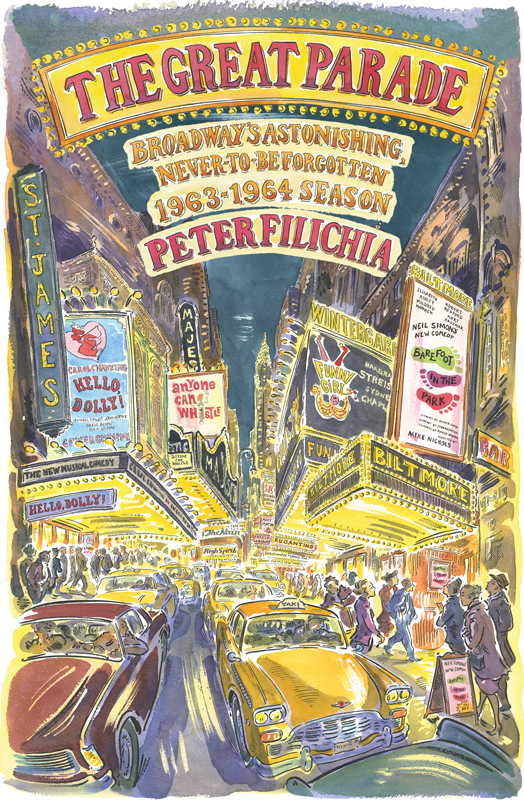Contents
Guide

The author and publisher have provided this e-book to you for your personal use only. You may not make this e-book publicly available in any way. Copyright infringement is against the law. If you believe the copy of this e-book you are reading infringes on the authors copyright, please notify the publisher at:
us.macmillanusa.com/piracy.
To John Harrison,
the first person I ever met
who truly understood me.
Luckily, I met him before
the 196364 season.
Thanks to my agent, Linda Konner, whos also the love of my life.
Thanks to Michael Flamini and Vicki Lame at St. Martinswho prove time and time again that Martin isnt the only saint in the office.
Thanks to Al Skip Koenig and Bryan Brooks, who were overly generous with information and functions as the best informal editor anyone could ever have.
Thanks to Ken Bloom for providing so many facts and to Val Addams for making available so many figures. What they had on hand about the 196364 season proved invaluable.
Thanks, too, to Dale Badway, Harry M. Bagdasian, Aubrey Berg, Mary K. Botosan, Wayne Bryan, Jay Clark, Jason Cocovinis, Drew Cohen, Joshua Ellis, Scott Farthing, Ron Fassler, Larry Fineberg, Freddie Gershon, Alan Gomberg, Marc Grossberg, Kenneth Kantor, Laura Kszan, Lionel Larner, Susan Lee, Robert LoBiondo, Tom Laskey, Jon Maas, Mark Madama, Kevin McAnarney, Richard C. Norton, Erin Oestreich, John Prignano, Paul Roberts, Justin Squigs Robertson, Howard Rogut, David Schmittou, Jim Seabrough, Bob Sixsmith, Ron Spivak, Tom Stretton, Robert Viagas, Walter Willison, and the late, great David Wolf.
From 194647 to 197677, every volume of Theatre World had the same cover design.
The annual that chronicled the previous theatrical season from June 1 to May 31 displayed on its dust jacket the headshots of six of the semesters most illustrious performers.
In 196364, editor Daniel Blum opted for:
Carol Channing (Hello, Dolly!)
Richard Burton (Hamlet)
Albert Finney (Luther)
Carol Burnett (Fade OutFade In)
Beatrice Lillie (High Spirits)
Alec Guinness (Dylan)
They were all fine choices. But no Barbra Streisand, who officially became a bona fide star thanks to Funny Girl ? On April 10, Streisand made the cover of Time; a mere forty-two days later, on May 22, she was on the cover of Life.
And she wasnt good enough for Blums dust jacket?
(Maybe Blum had a crystal ball that told him Streisand would never-ever-ever come back to Broadwayand that made him decide not to make a big deal of her.)
Two of the performers Blum did choose also made the cover of Life that season. Burton was seen in the middle of Hamlets To be, or not to be soliloquy. Channing, who was shown snuggling up to Horace Vandergelders cash register, wound up there before making the cover of Look , too.
The other Broadway Life cover girl was also overlooked by Blum: Elizabeth Ashley, who played the irrepressible newlywed in Barefoot in the Park. (The editors at Life were apparently more impressed with Ashley than with her co-star: Robert Redford.)
Did Blum choose Finney solely for his Tony-nominated stint as the title character in Luther ? One could suspect that the Theatre World editor was influenced by Finneys suddenly hot Hollywood profile, thanks to his Oscar nomination for playing the title character of Tom Jones.
On the other hand, Blum had six previous Oscar winners from which to choose: Claudette Colbert, Jos Ferrer, Alec Guinness, Helen Hayes, Van Heflin, and Joanne Woodward. Aside from Guinness, the rest had to be satisfied with seeing their pictures inside the book .
That season, Woodward co-starred in a comedy with her husband, who didnt have an Oscarnot yetbut was arguably more famous: Paul Newman. He was already Hollywood royalty, along with three other movie stars who could have been blessed by Blum: Kirk Douglas, Charles Boyer, and Lee Remick.
Today we have plenty of movie stars who visit Broadway, but almost always in limited engagements. Some film luminaries think, Hey, Ill give up three months of Hollywood millions for a mere hundred thousand or so a week on Broadway, where Ill win a Tony that will look nice next to my other awards. (That worked out well for Geoffrey Rush and Denzel Washington. Not as successful was Tom Hanks, who at least received a nomination, unlike Julia Roberts, who didnt.)
But in 196364, Burton, Newman, and Woodward were the only ones whod demanded limited engagements; the others signed for the long haul, ranging from a years commitment to a run-of-the-play contract. Even Streisand honored her two-year pact.
Besides, no one expected that even Burton would do enough business to run more than four months; none of Hamlet s fifty-nine Broadway productions dating back to 1761 had ever run longer.
Blum might have eliminated Douglas, Boyer, and Remick because each had appeared in a flopas had Mary Martin. Shed become the First Lady of the American Musical Theater now that Ethel Merman had officially retired from Broadway (again). Despite Martins three Tony wins (and a special one for taking Annie Get Your Gun on the road), she couldnt keep Jennie running.
Julie Harris of Marathon 33 and Helen Hayes of The White House had each already won two Tonys, but 196364 did not give them their greatest vehicles. Hayes would have a bigger beef with T. E. Kalem of Time magazine than with Blum. In A. E. Hotchners historical pageant , she portrayed the wives of eleven presidents from Abigail Adams to Edith Wilson as well as nineteenth-century gossip columnist Leonora Clayton. Kalem didnt like the play (Presidential snip shots, he called it), but he didnt even mention Hayes by name. What a slap in the face for the star whose forty Broadway appearances had made her the First Lady of the entire American Theater.
We can forgive Blum for omitting such luminaries as Tallulah Bankhead, Tom Bosley, Colleen Dewhurst, Peter Falk, Angela Lansbury, Christopher Plummer, Robert Preston, and Cyril Ritchard, all of whom saw their shows prematurely close. So did Bert Lahr, despite winning the Best Actor in a Musical Tony for Foxy. But what about Jason Robards Jr. or Barbara Loden in Arthur Millers After the Fall ? He was already a star, and she became the Tony-winning toast of the town for her homage to Millers second wife, Marilyn Monroe. That even got her the cover of the Saturday Evening Post.
While were talking Tonys, Hume Cronyn, who wasnt even halfway through his sixty-two-year Broadway career, won for his Polonius in Hamlet. Whats more, Cronyn was the first actor honored for a Shakespearean role in the thirty-seven revivals of the Bards works since the Tonys had begun in 194647. And what of Cronyns castmate Alfred Drake, already the recipient of a brace of Tonys? Both men were Theatre World cover-worthy .
Blum may have chosen Carol Burnett just to entice book buyers; she was, after all, well known to the nation from her prolific appearances on the highly rated Garry Moore Show . By the time Blums book went to press, however, the dire handwriting was on the wall for Burnetts Fade OutFade In: handwriting that was distinctively in her penmanship . (More on that later.)
By the time Blum had submitted his manuscript, Lillies High Spirits must have closed, too. But wasnt Tammy Grimes at least as valuable to the show , given that she appeared in seven songs (in a substantially larger role) to Lillies four? Certainly The Saturday Evening Post thought so; she, not Lillie, got the cover when High Spirits was featured.


